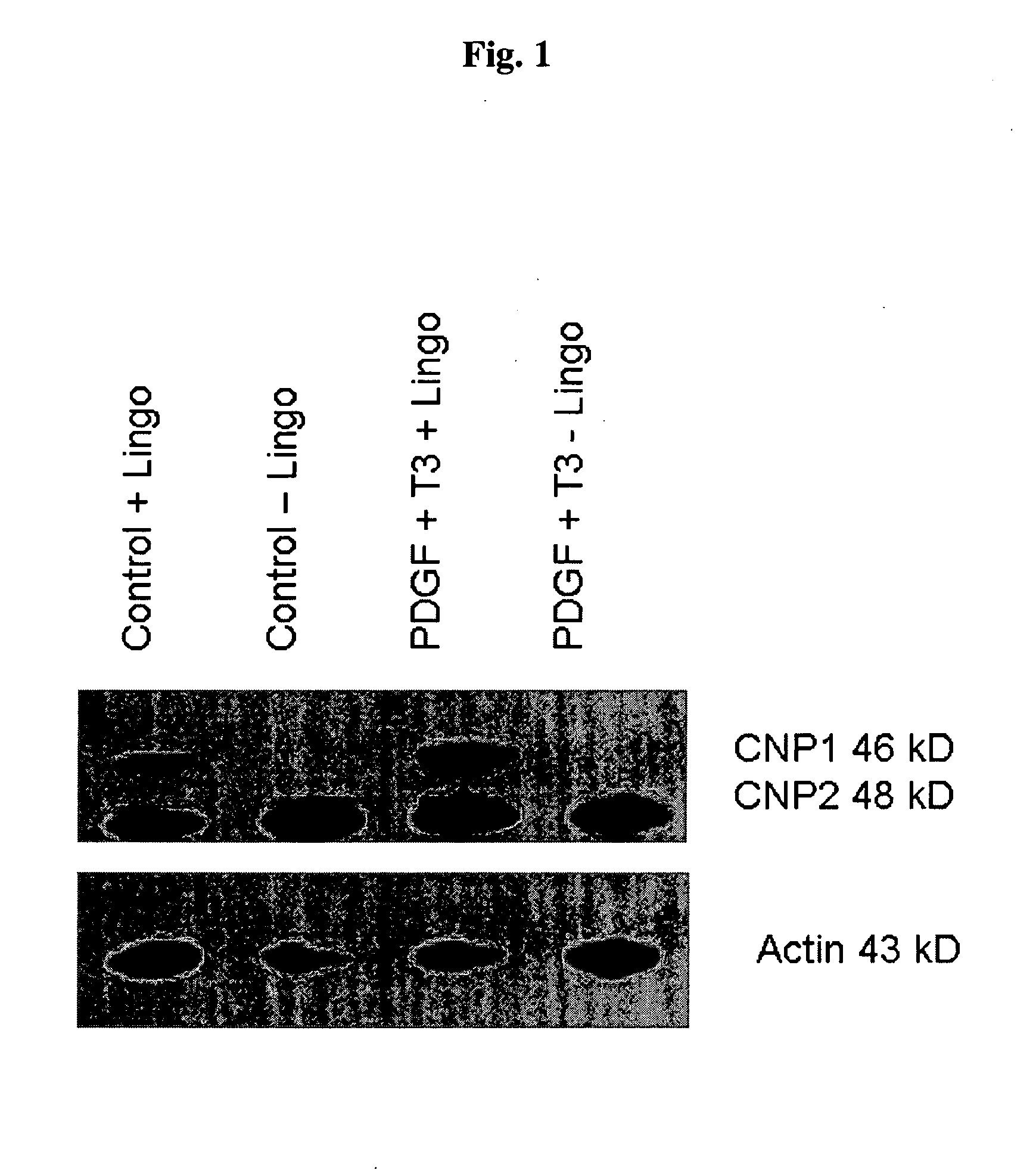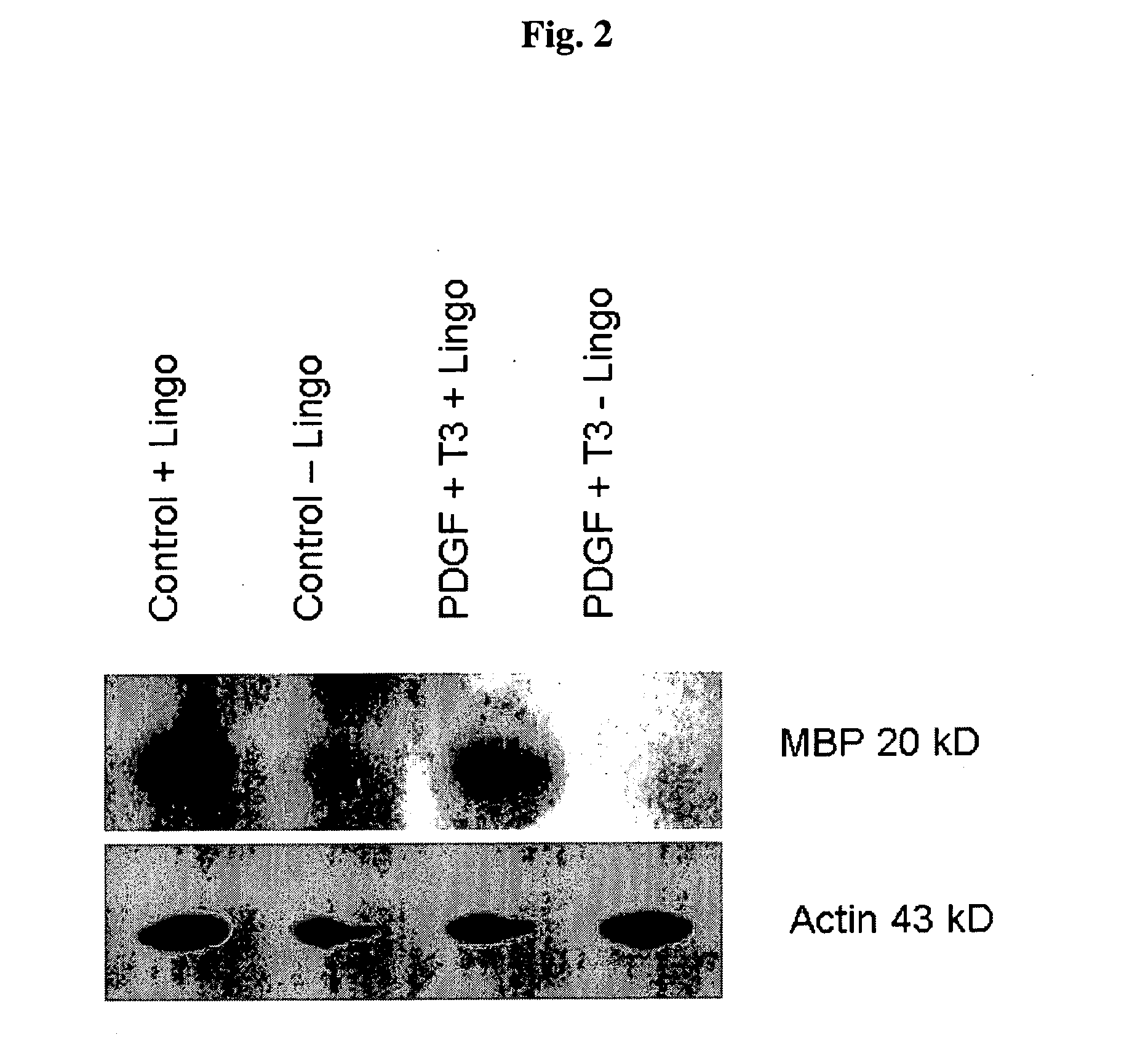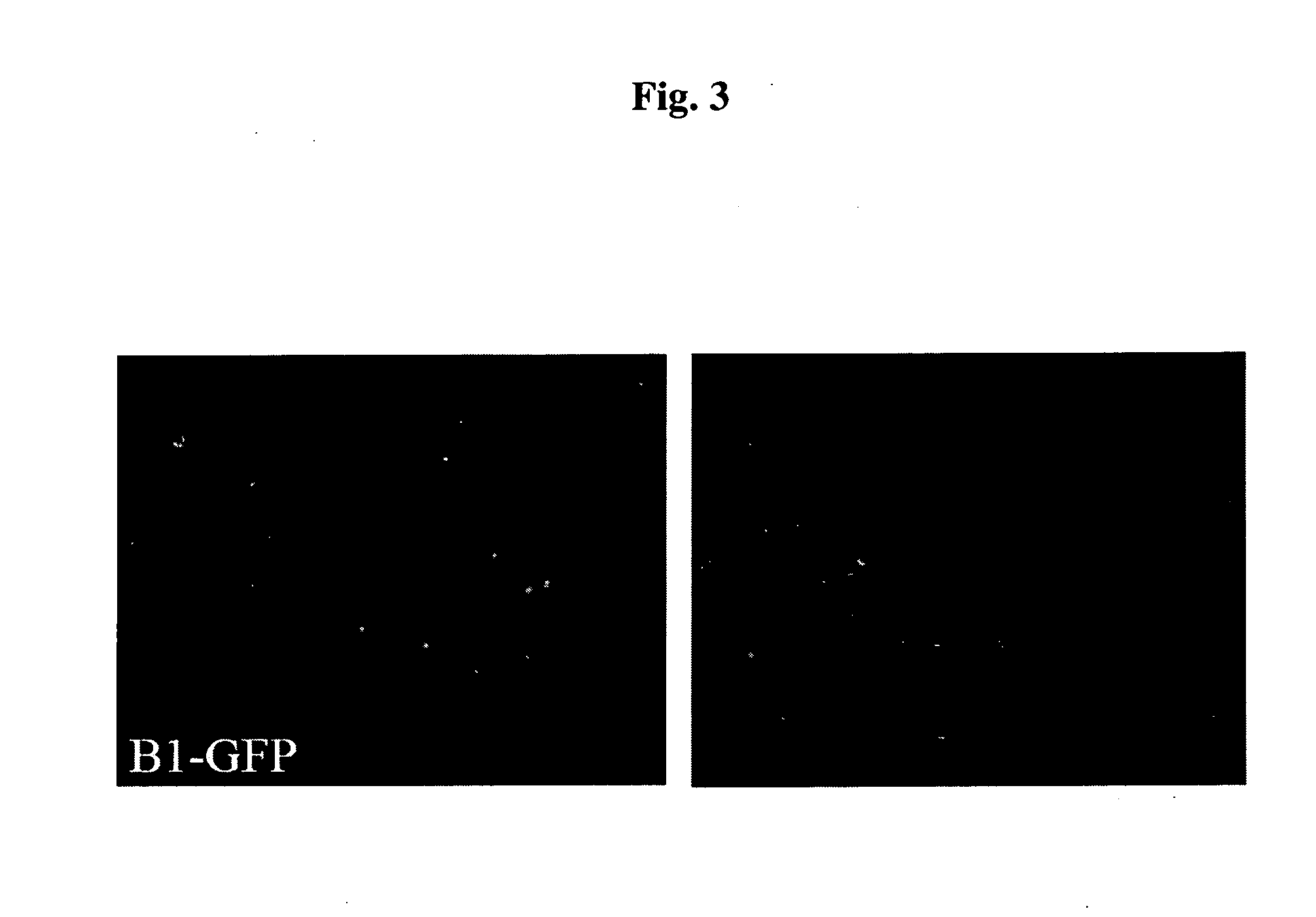Cell-based compositions and methods for treating conditions of the nervous system
- Summary
- Abstract
- Description
- Claims
- Application Information
AI Technical Summary
Benefits of technology
Problems solved by technology
Method used
Image
Examples
example 1
Differentiation of GRPs into Myelination-Competent Oligodendrocytes
[0094]We sought to evaluate in vitro conditions for differentiating GRPs into myelination-competent oligodendrocytes. Accordingly, rat GRPs were plated on Poly-L-Lysine and laminin coated plates at 5×105 cells per well of a six well dish in GRP media (described in Example 2). The following day, an antibody to the extracellular domain of LINGO1 with or without T3 plus PDGF, at a final concentration of 10 μg / ml (antibody), 30 ng / ml T3, 20 ng / ml PDGF. Medium containing these reagents were replaced daily. 72 hours after addition of the various reagent combinations, cell lysates were generated by lysing the cells with 200 ul of RIPA buffer and a cell scraper. Lysates were sonicated and protein concentration was determined by Bradford assay (Biorad). Lysate (25 μg) was added to each well of an SDS-PAGE gel, electrophoretically, and transferred to PVDF membrane (Immobilon). After blocking with 5% nonfat dry milk, immunodete...
example 2
Generation of Genetically Modified GRPs by Multiple Lentivirus Transduction
[0095]We sought to generate genetically modified GRPs that expressed VLA4 (a VCAM1 targeting ligand) on their surface.
Methods
[0096]Rat glial restricted precursor (GRP) cells were isolated with modifications Rao et al (1998) 1998 Mar. 31; 95(7):3996-4001. The spinal cord was dissected from rats (E13-E13.5) with #5 forceps and plated in a Petri dish in DMEM / F12 media (Gibco, cat #11330). Spinal cords were incubated at 37° C. incubator in 10 mis of 0.005% Trypsin from bovine pancreas (Sigma # T1426) and 100 μl (10 mg / ml) stock solution DNASE-1 (Sigma cat #Dn25) for 10 minutes and then triturated. The cell suspension was then incubated for 10 minutes and triturated again. Five ml of GRP media was then added to the suspension, and the suspension was then centrifuged at 2000×g for 5 minutes. The resulting pellet was resuspended in 10 mis of GRP media to which 100 μl of DNAse-1 was then added. The suspension was the...
example 3 genetically modified
GRPs Administered by Intra-Arterial Administration are Delivered to the Brain
[0103]Naïve adult Lewis rats were given LPS 3 mg / kg 12 hours prior to transplantation. Lewis rat VLA4-expressing GRPs, generated by a method similar to that described in Example 2, were incubated with Ferridex at a dose of 25 μg / ml (Berlex Imaging, Wayne, N.Y., USA) that had been mixed with poly-L-lysine (375 ng / ml; Sigma-Aldrich, St. Louis, Mo., USA), incubated for 1 hr, and added to the cell culture for 24 hr. At the time of transplantation, 2 million GRPs in 500 μl of PBS were injected into the right common carotid artery after superficial dissection. Rats were then sacrificed prior to emergence from anesthesia and imaged with T2-star sequences on a 9.7T MRI. As shown in FIG. 6, GRPs are detected by ‘black’ signal throughout the brain, especially in a vascular distribution corresponding to deep and radial cortical arteries. RIGHT-comparison saline injected (top) vs ferridex labeled VLA4-expressing GRPs (...
PUM
 Login to View More
Login to View More Abstract
Description
Claims
Application Information
 Login to View More
Login to View More - R&D
- Intellectual Property
- Life Sciences
- Materials
- Tech Scout
- Unparalleled Data Quality
- Higher Quality Content
- 60% Fewer Hallucinations
Browse by: Latest US Patents, China's latest patents, Technical Efficacy Thesaurus, Application Domain, Technology Topic, Popular Technical Reports.
© 2025 PatSnap. All rights reserved.Legal|Privacy policy|Modern Slavery Act Transparency Statement|Sitemap|About US| Contact US: help@patsnap.com



